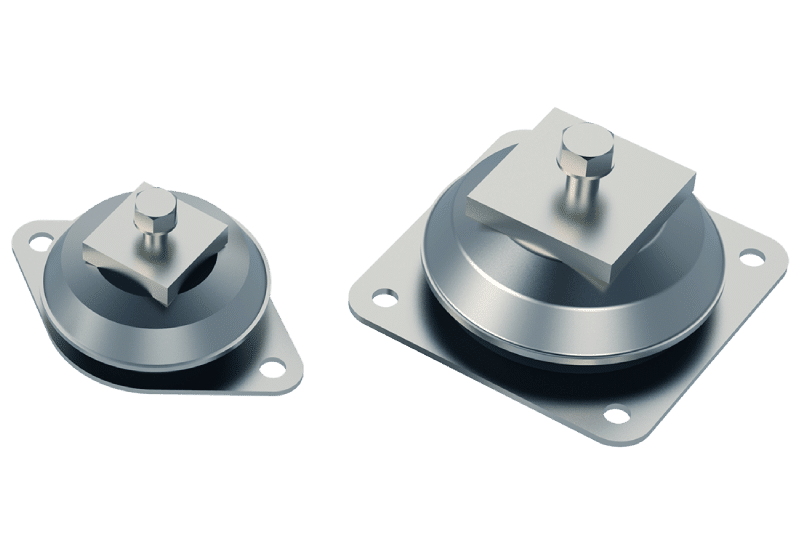In the dynamic environment of the marine industry, controlling vibrations is more than a technical challenge—it’s a critical factor in ensuring the safety, efficiency, and longevity of marine vessels. Among the various solutions deployed, rubber mounts stand out for their exceptional ability to manage and mitigate vibrations. This article explores the significant impact of rubber mounts on marine vibration control, illustrating how these seemingly simple components transform the operational dynamics of vessels at sea.
Understanding Vibration Challenges in the Marine Industry
Marine vessels, from small fishing boats to large cargo ships, encounter various sources of vibration, primarily from engines, propellers, and environmental factors like waves and wind. These vibrations, if not adequately controlled, can lead to equipment failure, structural damage, and discomfort for crew and passengers.
To delve deeper into the solution, explore the comprehensive range of rubber design mounts.
The Role of Rubber Mounts in Vibration Control
1. Absorbing Engine and Machinery Vibrations
Rubber mounts are strategically placed between the source of vibration (such as engines and generators) and the vessel’s structure. Their primary function is to absorb and isolate these vibrations, preventing them from transferring to the rest of the vessel. This absorption is crucial for maintaining the integrity of both the machinery and the vessel’s structure.
2. Enhancing Operational Stability and Safety
By mitigating vibrations, rubber mounts contribute significantly to the overall stability of the vessel. This stability is not just about comfort; it affects the precision of navigation instruments and the operation of critical systems on board, thereby enhancing safety in rough seas.
Types of Rubber Mounts Used in Marine Vibration Control
1. Cylindrical Mounts
Cylindrical mounts are the most common type used in marine applications due to their simplicity and effectiveness. They are ideal for light to medium-weight machinery and provide a balanced approach to vibration isolation.
2. Sandwich Mounts
Sandwich mounts are designed for heavier applications and can handle larger vibrations by distributing the load across a wider surface area. They are particularly effective for large engines and heavy-duty machinery.
Selecting the Right Rubber Mounts for Your Vessel
1. Analyzing Vibration Frequencies and Loads
The first step in selecting the right rubber mounts is to analyze the specific vibration frequencies and loads generated by your vessel’s equipment. This analysis helps in choosing mounts that are tuned to those frequencies, ensuring maximum effectiveness.
2. Considering Environmental Factors
The marine environment is harsh, with factors like saltwater, humidity, and temperature extremes affecting material performance. Selecting rubber mounts that can withstand these conditions is essential for long-term durability and reliability.
Benefits of Using Rubber Mounts in Marine Applications
1. Prolonged Equipment Life
By isolating vibrations, rubber mounts reduce the wear and tear on machinery, significantly prolonging its operational life. This isolation also minimizes maintenance needs and operational costs over time.
2. Improved Comfort and Well-being
The reduction in noise and vibrations contributes to a more comfortable environment for the crew and passengers. This improvement in comfort can lead to better morale and reduced fatigue, which is crucial during long voyages.
Implementing Rubber Mount Solutions Effectively
1. Proper Installation Techniques
For rubber mounts to function optimally, they must be installed correctly. This involves ensuring proper alignment and securing the mounts to handle the expected loads without shifting or degrading prematurely.
2. Regular Maintenance and Inspections
Like any critical component, rubber mounts require regular inspections and maintenance. Checking for signs of wear, such as cracks or hardening, and replacing mounts when necessary helps maintain the effectiveness of vibration control measures.
Conclusion
Rubber mounts are more than just a component; they are a comprehensive solution to the pervasive problem of vibrations in the marine industry. By choosing the right mounts, ensuring proper installation, and maintaining them regularly, vessel operators can dramatically improve the safety, efficiency, and comfort of their operations. In the ever-evolving marine industry, rubber mounts continue to play a vital role in navigating the challenges of the seas with confidence and stability.



